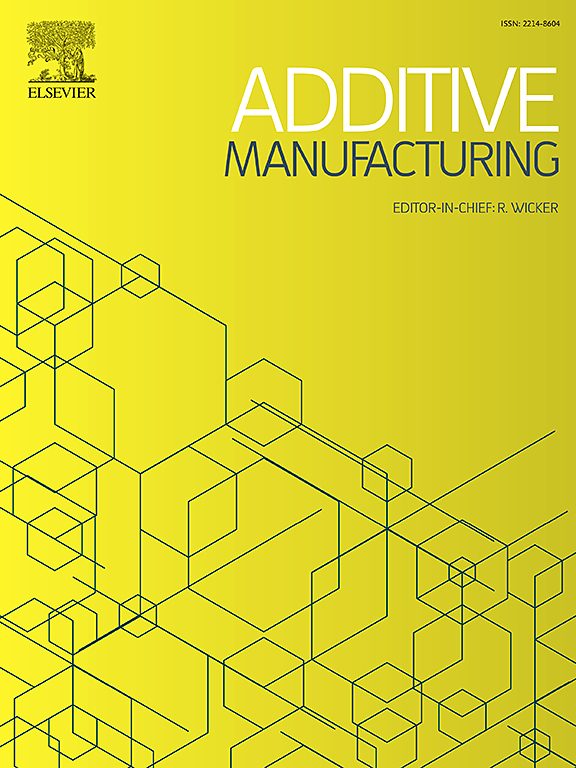Design and optimization of high stiffness tetrahedral lattice structure
IF 10.3
1区 工程技术
Q1 ENGINEERING, MANUFACTURING
引用次数: 0
Abstract
As tetrahedra are well known for their stability and excellent load-bearing capabilities, this work proposes a novel method for designing and optimizing high-stiffness tetrahedral lattice structures. First, the tetrahedral lattice cells with periodic boundary conditions are generated within a unit cubic domain based on a specified number and radii of randomly distributed seed points. By analyzing the printability of the lattice cell, several constraints are introduced to restrict both the number of seed points and their radii within each lattice cell. Next, the relationships among the number of seed points, radii, relative density, Young’s modulus, and anisotropy of the lattice cells are analyzed using the homogenization method. For a given design domain, it is discretized into a hexahedral finite element mesh. A topology optimization formulation is then proposed to optimize the number of seed points and their radii across all finite elements. The seed points are randomly sampled within each finite element according to the optimized number and radius. Finally, a strut-shaped tetrahedral lattice with variable radii is generated based on the seed points and their radii. Additionally, a strategy is introduced to eliminate struts in low-density regions to further enhance structural stiffness. Extensive numerical and physical experiments, along with comparisons, have been conducted to demonstrate the effectiveness of the proposed method.
高刚度四面体晶格结构的设计与优化
本文章由计算机程序翻译,如有差异,请以英文原文为准。
求助全文
约1分钟内获得全文
求助全文
来源期刊

Additive manufacturing
Materials Science-General Materials Science
CiteScore
19.80
自引率
12.70%
发文量
648
审稿时长
35 days
期刊介绍:
Additive Manufacturing stands as a peer-reviewed journal dedicated to delivering high-quality research papers and reviews in the field of additive manufacturing, serving both academia and industry leaders. The journal's objective is to recognize the innovative essence of additive manufacturing and its diverse applications, providing a comprehensive overview of current developments and future prospects.
The transformative potential of additive manufacturing technologies in product design and manufacturing is poised to disrupt traditional approaches. In response to this paradigm shift, a distinctive and comprehensive publication outlet was essential. Additive Manufacturing fulfills this need, offering a platform for engineers, materials scientists, and practitioners across academia and various industries to document and share innovations in these evolving technologies.
 求助内容:
求助内容: 应助结果提醒方式:
应助结果提醒方式:


